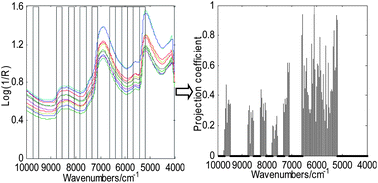An IGA-PLSP method for FT-NIR wavelength selection for measuring soluble solid content of citrus fruits
Abstract
Near-

* Corresponding authors
a
Key Laboratory of Advanced Process Control for Light Industry (Ministry of Education), Jiangnan University, Wuxi 214122, P. R. China
E-mail:
zhuqib@163.com
Fax: +86-51085910633
Tel: +86-15861596626
b Agricultural Research Service, U.S. Department of Agriculture, Michigan State University, 105 Farrall Hall, East Lansing, Michigan 48824, USA
Near-

 Please wait while we load your content...
Something went wrong. Try again?
Please wait while we load your content...
Something went wrong. Try again?
X. Zhao, Q. Zhu, M. Huang and H. Cen, Anal. Methods, 2013, 5, 4811 DOI: 10.1039/C3AY40916C
To request permission to reproduce material from this article, please go to the Copyright Clearance Center request page.
If you are an author contributing to an RSC publication, you do not need to request permission provided correct acknowledgement is given.
If you are the author of this article, you do not need to request permission to reproduce figures and diagrams provided correct acknowledgement is given. If you want to reproduce the whole article in a third-party publication (excluding your thesis/dissertation for which permission is not required) please go to the Copyright Clearance Center request page.
Read more about how to correctly acknowledge RSC content.
 Fetching data from CrossRef.
Fetching data from CrossRef.
This may take some time to load.
Loading related content
